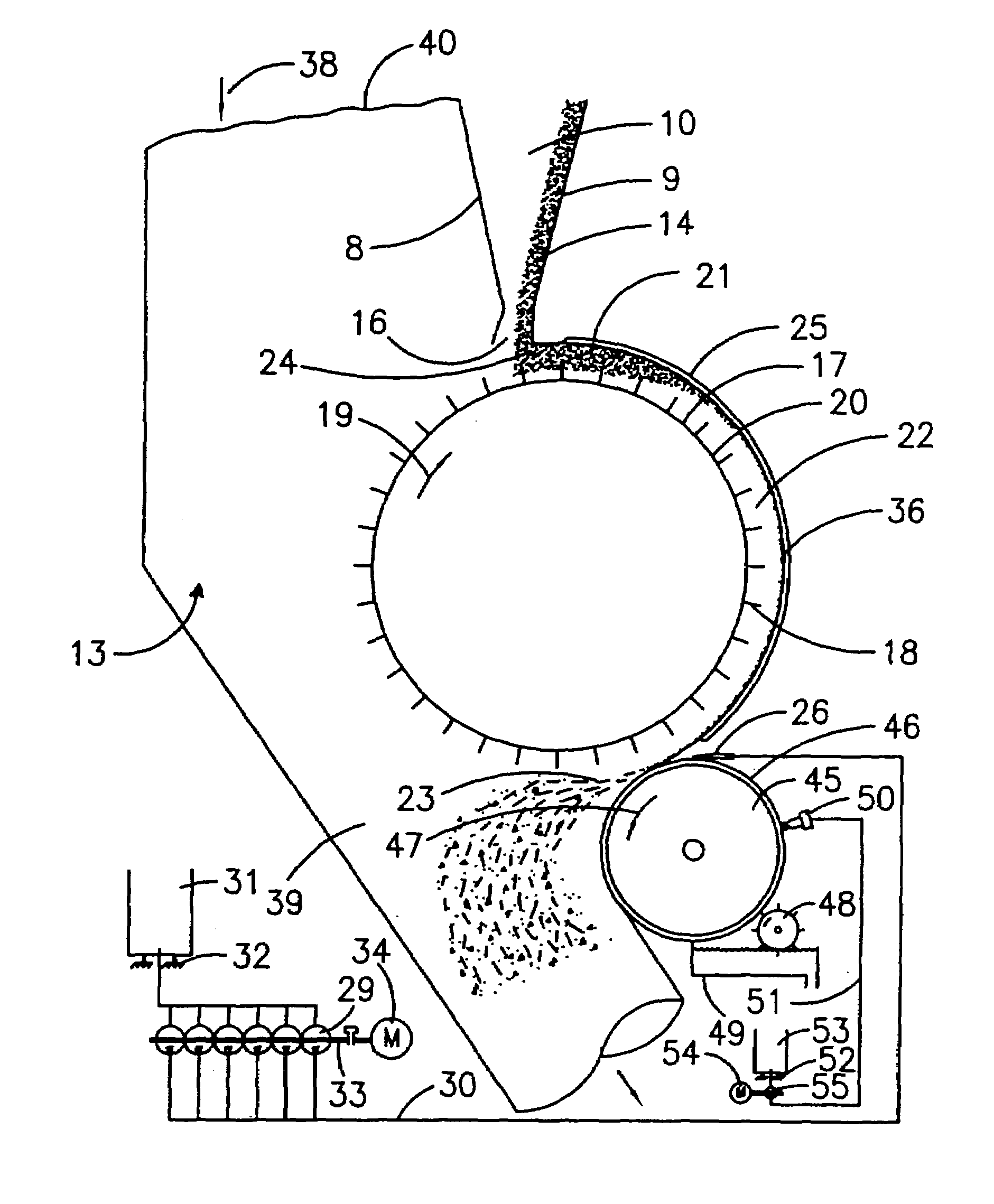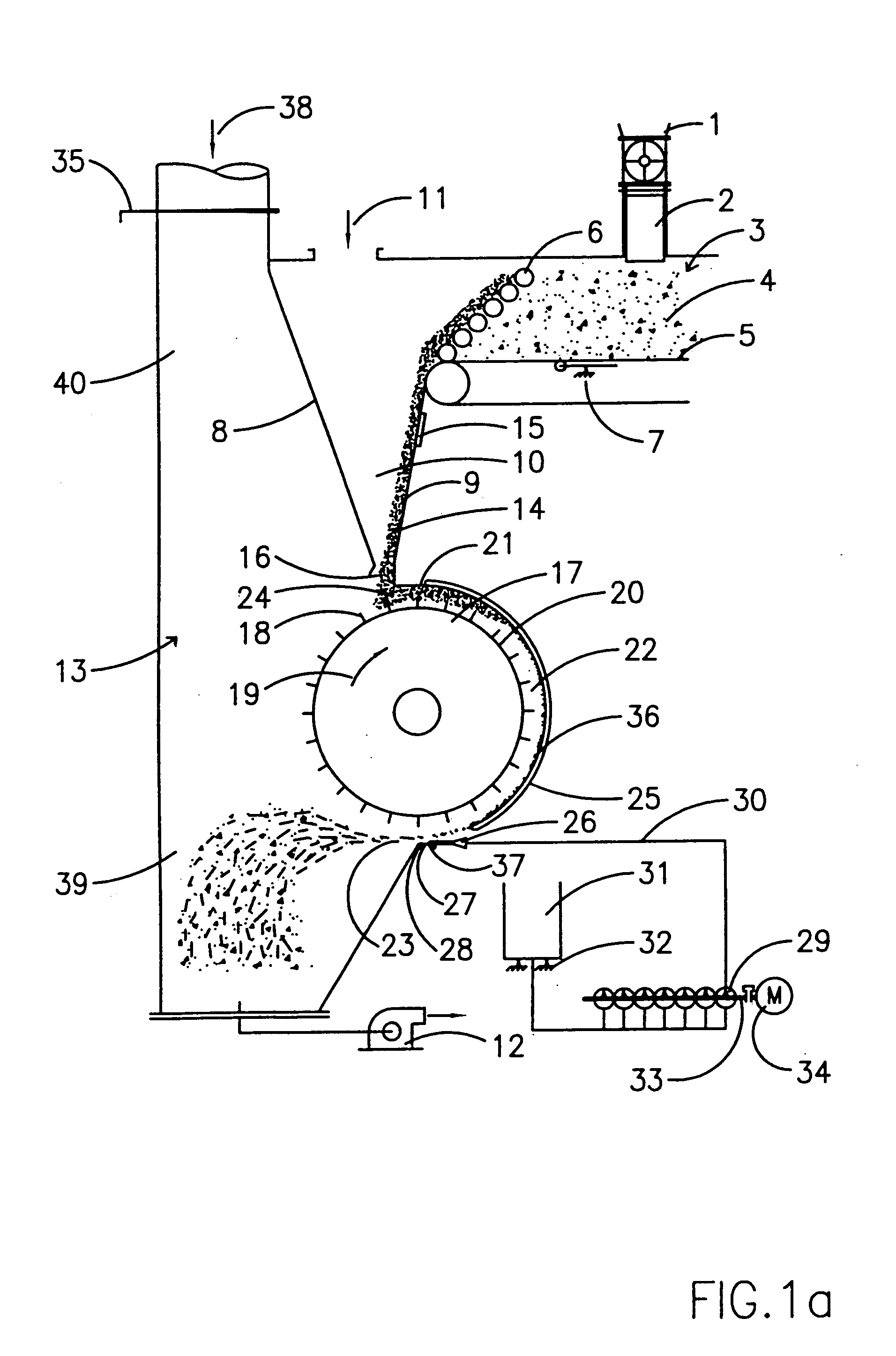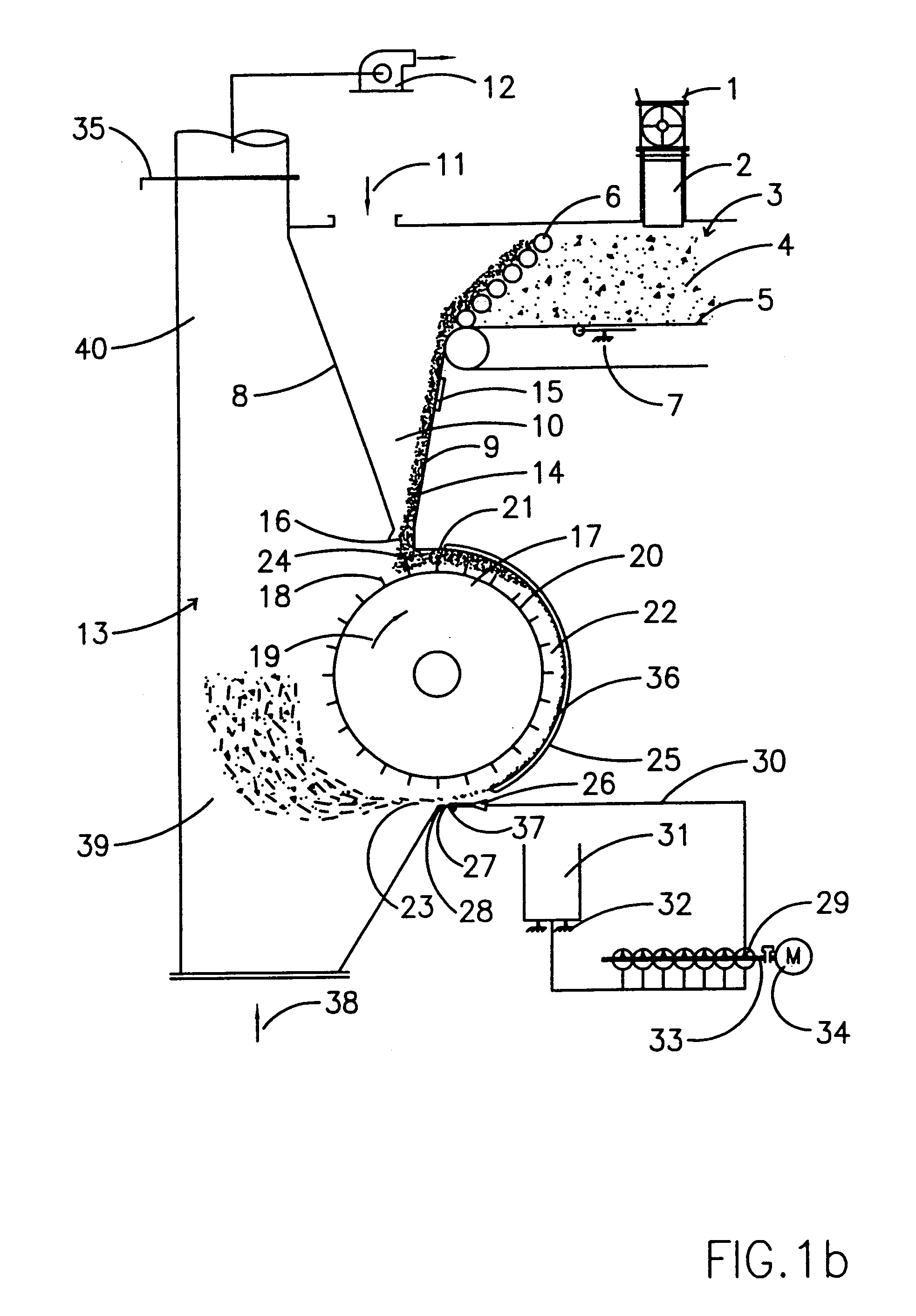Process and device for gluing dried fibers designated for the production of fiberboards
a technology of dried fibers and gluing devices, which is applied in the direction of lignocellulosic moulding material treatment, gas current separation, reed/straw treatment, etc., can solve the problems of loss of reactivity of glue during the drying process of fibers, relatively high glue consumption of the gluing system, and increased glue consumption
- Summary
- Abstract
- Description
- Claims
- Application Information
AI Technical Summary
Benefits of technology
Problems solved by technology
Method used
Image
Examples
Embodiment Construction
[0086]The gluing device as shown in FIG. 1a comprises a transverse fiber distributing device 2 which is connected to an outlet 1 of a fiber dryer [not illustrated]. Connected to the transverse distributing device 2 is a metering bin 3 which is filled uniformly with dried wood fibers 4 by means of the transverse distributing device 2. By means of a base belt 5, the wood fibers 4 are supplied to a metering bin outlet having discharge rollers 6. The discharge rollers 6 serve to eliminate any relatively large clumps of fibers 4. The base belt 5 passes via a weighing device 7 which continuously records the current fiber throughput weight (weight per unit of time).
[0087]The fibers 4 pass from the metering bin outlet into a feed chute 10 which is is configured from two forming-walls 8 and 9 and which comprises an air-supply 11 at an upper end.
[0088]By means of a fan 12 of a pneumatic conveying device 13, which in FIG. 1a is only partially illustrated having a partial section associated wit...
PUM
| Property | Measurement | Unit |
|---|---|---|
| Force | aaaaa | aaaaa |
| Pressure | aaaaa | aaaaa |
| Centrifugal force | aaaaa | aaaaa |
Abstract
Description
Claims
Application Information
 Login to View More
Login to View More - R&D
- Intellectual Property
- Life Sciences
- Materials
- Tech Scout
- Unparalleled Data Quality
- Higher Quality Content
- 60% Fewer Hallucinations
Browse by: Latest US Patents, China's latest patents, Technical Efficacy Thesaurus, Application Domain, Technology Topic, Popular Technical Reports.
© 2025 PatSnap. All rights reserved.Legal|Privacy policy|Modern Slavery Act Transparency Statement|Sitemap|About US| Contact US: help@patsnap.com



